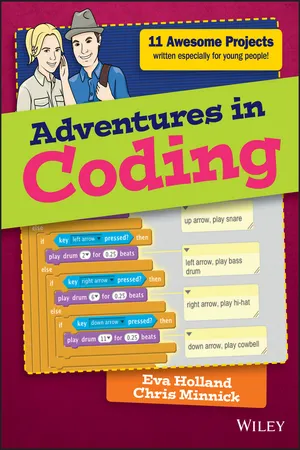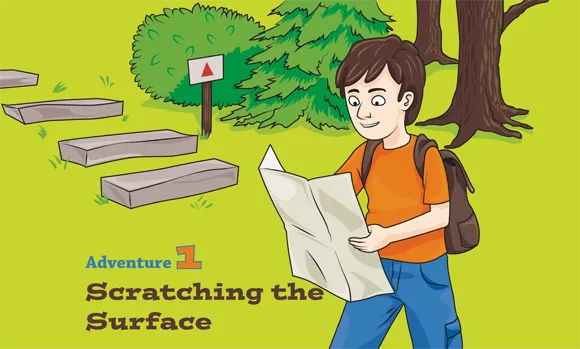
- English
- ePUB (mobile friendly)
- Available on iOS & Android
Adventures in Coding
About This Book
Learn to code the fun way with nine real projects for true beginners
Adventures in Coding is written specifically for young people who want to learn how to code, but don't know where to begin. No experience? No problem! This book starts from the very beginning to take you from newbie to app-builder in no time. You'll 'learn by doing' as you build projects designed to help you master fundamental programming skills—and you'll have a great time doing it. These skills form the foundation of any programmer's tool set, and you'll continue to use them as you graduate to other devices and more difficult projects. Each chapter includes a video to help clear up any confusion and make sure you really understand, so you can keep programming your way through every single project without hitting major roadblocks. If you're ready to start designing your own program, this book will help you get started today.
More and more kids are learning to code, and many schools offer basic programming classes as part of the regular curriculum. This book is structured like a class, starting with the basics and building skill upon skill, making it both a perfect accompaniment to formal instruction and an ideal guide for self-study.
- Learn the basic programming skills you'll use everywhere
- Build nine fun projects from super-basic to pretty challenging
- Build the skills you need to create bigger and better apps
- Watch video tutorials for extra help and explanations
How many times have you played with an app only to find yourself wishing it had this or that feature? If you learn how to code, you can be the creator of the next big app! But it all starts with that first small project. Adventures in Coding provides all the information you need, so let's get coding!
Frequently asked questions
Information

Coding Is Everywhere
Speaking the Language of Machines
- JavaScript
- BASIC
- Perl
- PHP
- Python
- Java
- Visual Basic
- C
- C++
- Scratch
Knowing Your Coding Lingo
Table of contents
- Cover
- Title Page
- About the Authors
- Contents
- Introduction
- Adventure 1: Scratching the Surface
- Adventure 2: Where in the World Is Scratch?
- Adventure 3: Using Control Blocks
- Adventure 4: Using Sensing Blocks
- Adventure 5: Using Event Blocks
- Adventure 6: Variables and Lists
- Adventure 7: Using Operators in Scratch
- Adventure 8: Using Graphics and the Pen
- Adventure 9: Building Your Own Blocks
- Adventure 10: Making and Using Sounds and Music
- Adventure 11: Exploring the Scratch Universe
- Appendix A: Installing the Scratch Offline Editor
- Appendix B: Testing Your Programs
- Glossary
- End User License Agreement
